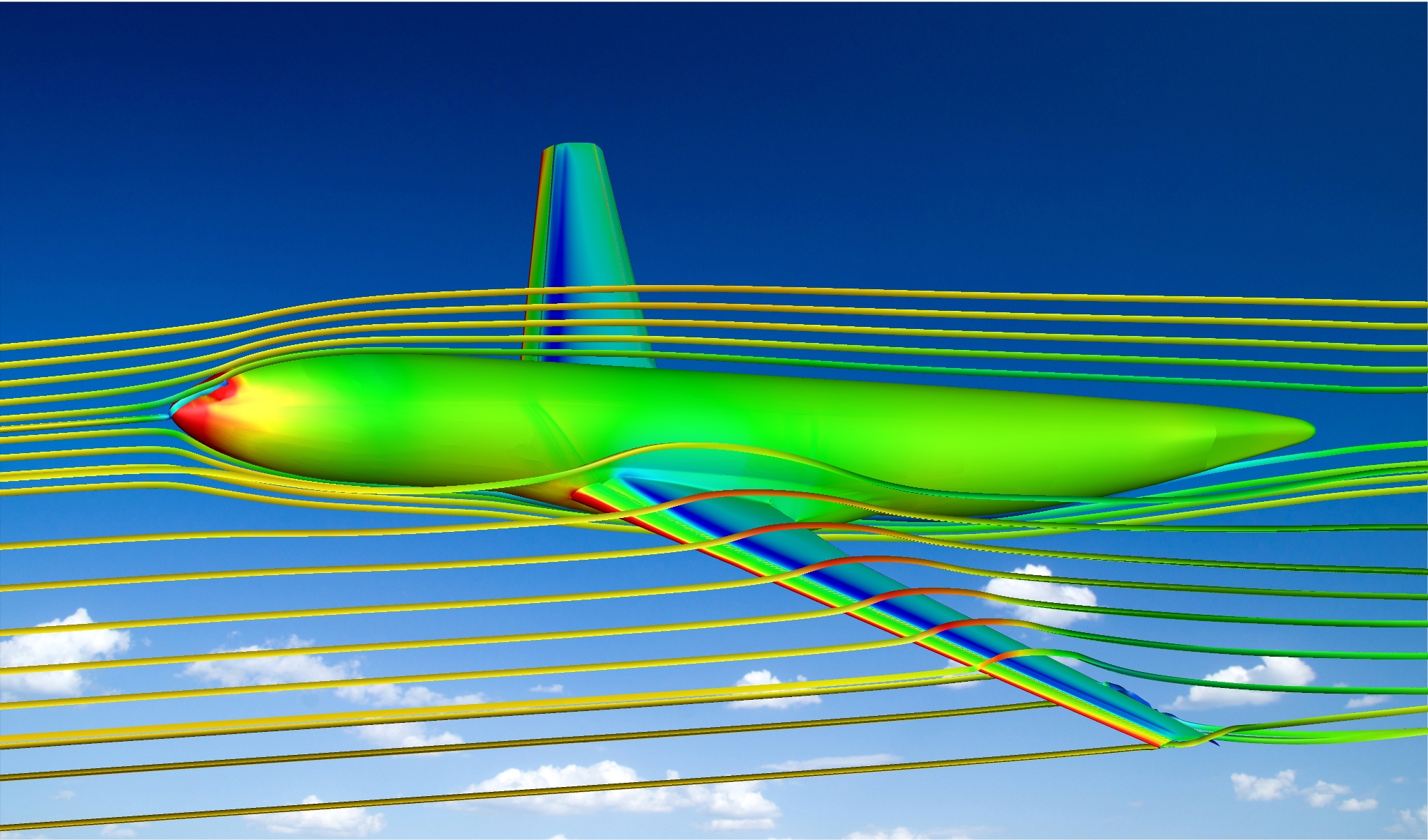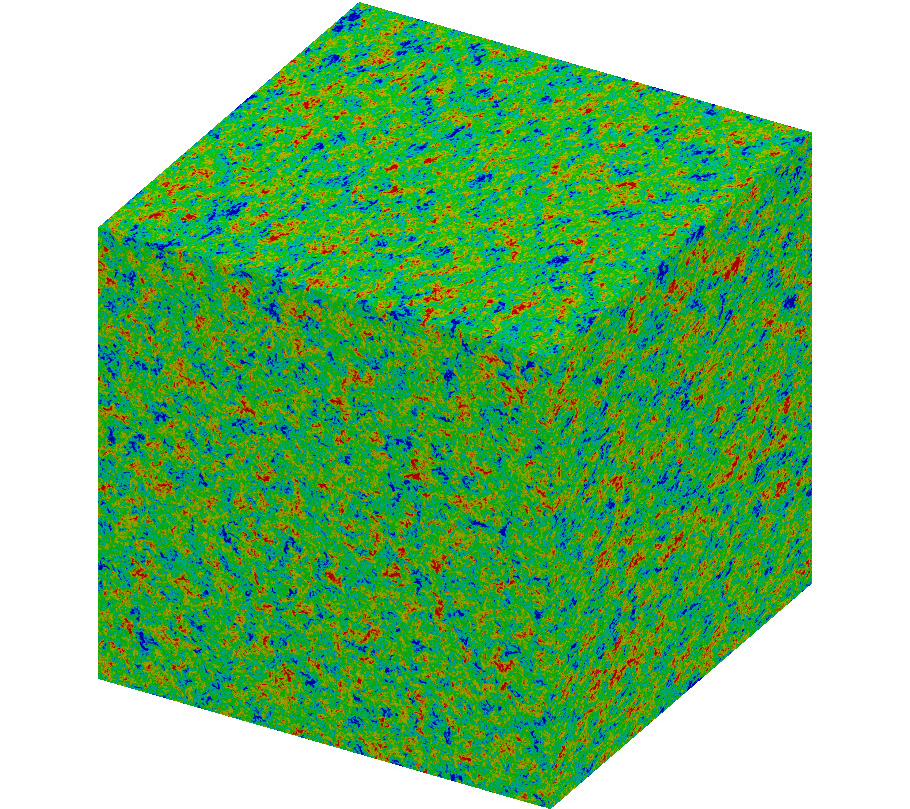The FLuD group is actively developing turbulence models for both applied and fundamental problems. The development of accurate and efficient models is critical to improve simulation capability, and thus provide a greater insight into the physics of fluid flow in a wide range of applications.
Key contacts:
- Turbulence modelling for compressible flows: Assoc. Prof. Ben Thornber
- Turbulence modelling for incompressible flows: Assoc. Prof. Michael Kirkpatrick
Reynolds Averaged Navier-Stokes – RANS
Reynolds Averaged Navier Stokes (RANS) models are required to run steady state turbulent flow computations. Within the group we utilise a range of RANS methods available in commercial algorithms, and within our very high order accurate algorithms. These are employed for rapid iteration of designs or initial scoping of a problem. A very high order accurate compressible method applied to RANS of a high lift configuration is shown here.
More information may be found here:
A Garcia-Uceda Juarez, A Raimo, E Shapiro, B Thornber “Steady turbulent flow computations using a low mach fully compressible scheme”, AIAA Journal 52 (11), 2559-2575, 2014

Large Eddy Simulation – LES
Large Eddy Simulation (LES) is a time accurate unsteady method of simulating high Reynolds number turbulence. The key modelling challenge is that the small scales of turbulence can no longer be resolved, hence they must be modelled. Within the group we are exploring modelling approaches for both reacting and non-reacting flows.
The animation on the right shows results from a Large Eddy Simulation of flow through a coaxial rotor configuration, as used in the Sikorsky X2.
Implicit Large Eddy Simulation – ILES
Implicit LES refers to a turbulent modelling strategy where the numerical dissipation of the numerical scheme provides the sub-grid model. To use this approach, a carefully designed numerical algorithm must be used along with an appropriate mesh to ensure that the large scales can evolve without influence of viscosity, thus in a physical manner. Our research group has developed methods to analyse numerical methods, and new algorithms for ILES, This also includes coupling of ILES with RANS and explicit combustion models.
These are implemented in the USyd algorithm Flamenco, which utilises Implicit LES for the computation of non-wall bounded turbulence and turbulent mixing at very high Reynolds number. The implicit subgrid model is provided by the fifth order accurate scheme in space, coupled with a higher order accurate scheme in time. The visualisation to the rights shows the velocity field in a billion-point computation of homogeneous decaying turbulence.
Relevant publications include:
Y Zhou, B Thornber “A comparison of three approaches to compute the effective Reynolds number of the implicit large-eddy simulations”, Journal of Fluids Engineering 138 (7), 2016
B Thornber, A Mosedale, D Drikakis “On the implicit large eddy simulations of homogeneous decaying turbulence”, Journal of Computational Physics 226 (2), 1902-1929,2007
B Thornber, D Drikakis, RJR Williams, D Youngs “On entropy generation and dissipation of kinetic energy in high-resolution shock-capturing schemes”, Journal of Computational Physics 227 (10), 4853-4872, 2008

Detached Eddy Simulation – DES
Detached Eddy Simulation (DES) is a combination of the RANS approach for wall bounded flows, and LES for detached shear layers. The aim is to provide a computationally efficient means of resolving the thin boundary layer with very sharp gradients, yet also capture unsteady shear layers and recirculation zones. These approaches are very promising for high Reynolds industrial problems and so improved modelling strategies are a focus of our research.
This video shows the results of a computation of the DrivAer Fastback model produced using a newly developed compressible fractional step method (CFSM) by Sydney PhD student Liang Yu, in collaboration with Dr. Sammy Diasinos (Macquarie). It shows the time variations of wall shear stress generated by vortical structures at the A-Pillar.
Publications in this area include:
L Yu, S Diasinos, B Thornber “Automotive Aerodynamics Prediction using a Fast Transient Solver for Low-Mach Number Compressible Flow”, Proceedings of the 21st Australasian Fluid Mechanics Conference, 2020
A Islam, B Thornber “A high-order hybrid turbulence model with implicit large-eddy simulation”, Computers & Fluids 167, 292-312,2018
Reacting flows
While the bulk of combustion capability lies within the Clean Combustion group, FluD group members have also undertaken unsteady turbulent combustion modelling utilising Flame Surface Density approaches and working with our colleagues in the Clean Combustion group demonstrated the first coupling of a compressible solver with the Conditional Moment Closure model for LES of premixed combustion. The USyd algorithms also have traditional Arhennius based sources implemented.
The animation shows an animation of isosurfaces of progress variable in a premixed air-methane slot flame. This case was used to validate the new, compressible, LES-CMC method. More information can be found here:
B Thornber, RW Bilger, AR Masri, ER Hawkes “An algorithm for LES of premixed compressible flows using the conditional moment closure model”, Journal of Computational Physics 230 (20), 7687-7705, 2011.